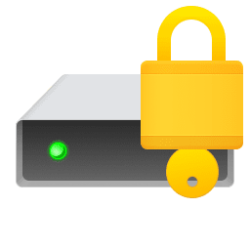- Local time
- 3:29 AM
- Posts
- 5,106
- Location
- Hafnarfjörður IS
- OS
- Windows XP,10,11 Linux (Fedora 42&43 pre-release,Arch Linux)
Hi folks
some people might find the documentation a little confusing if you want to create several vhdx virtual hard disks and boot from any of them, with no "base OS" installed on the disk containing the boot menu. I did at first I must admit.
So you've prepped the target disk which will contain your vhdx files. This disk should have a system UEFI partition ("S"), an MSR partition and a basic NTFS formatted data area "D" which is the repository for your VHDX files.
The basic procedure adding another vhdx is the same as when you created the first one-- create your vhdx containing your Windows system if copying an existing one (use Macrium clone disk to the VHDX if you do it that way) or dism /applyImage using a Windows install WIM if you are creating a new W11 installation. Create the vhdx file on any usb device. If creating from the wim.install file you don't need to create gpt disk.
Boot a windows pe system, copy the vhdx file to the "target" disk -- the one containing your vhdx files
attach the vhdx via diskpart (just that one - not any of the others if you have existing ones)
find out the volume -- assume your windows vhdx (the new one) has volume Q, the target disk is volume D, the system partition on it is Volume S .
then simply add the entry to the boot manager by :
Q:\
cd q:\windows\system32
bcdboot q:\windows /s S: /f UEFI
this will ADD an entry to the boot mgr if one exists already -- the standard documentation doesn't make that clear !! (at least not to me as I thought the entries would get overwritten when you did the bcdboot command).
Do switch to the windows\system32 directory of the vhdx you want to add to the boot menu. As in the above example q:\windows\system32
It's amazing how little extra things like that can cause confusion even though the base procedure is easy enough to understand !!
You can also "mass add" entries to the boot menu as well - in this case attach the relevant vhdx files via diskpart in the windows pe system. Assign different letters to the vhdx volumes and run the bcd command for each volume using the volume letter of the relevant vhdx. simply replace q: with the appropriate volume letter for each vhdx volume.
If creating brand new (initial) W11 installs ensure also you have a copy of your old (working) drivers -- copy from windows\system32\Driverstore to any acessible folder and from within windows go down all devices in device mgr with unknown device or queries against it saying update driver -> browse this pc and point to the saved Driverstore folder.
you can also change the displayed names in the boot menu via bcdedit if you want more meaningful names.
Have fun !!! -- I prefer this method as I can test a load of different W11 builds / scenarios, have different languages etc etc all on real hardware. Saves doing loads of backups and restores if you only have a single Windows install on your main HDD. Back up the disk of course initially otherwise you can lose all the vhdx files !!!!!
Some people might want to use their existing Windows system for booting vhdx files -- in that case simply add the vhdx files to the resident system's system file (EFI partition) boot menu by running the bcdboot command from within Windows.
Personally I don't like that idea as you have to go through a whole palaver if you want to upgrade / change your "resident" windows edition. Using the Native boot system each Windows install is totally separate.
I recommend also if using multiple vhdx files from a physical disk is to add a Macrium stand alone rescue to the "resident vhdx data store" and the boot menu. Saves hunting around for your backup USB device etc. The nice thing about all this is that if any Windows BSOD's or crashes it's just that Windows -- so unless your HDD (or SSD) goes totally defective - unlikely these days -- all the other Windows installs on that HDD will be unaffected so recovery should be a doddle. I also have my Windows PE system on the boot menu this way too.
So my repository is : W11 std eng, W11 std isl, W11 pre-release eng, W10 current release, Macrium V8 , Windows PE
Cheers
jimbo
some people might find the documentation a little confusing if you want to create several vhdx virtual hard disks and boot from any of them, with no "base OS" installed on the disk containing the boot menu. I did at first I must admit.
So you've prepped the target disk which will contain your vhdx files. This disk should have a system UEFI partition ("S"), an MSR partition and a basic NTFS formatted data area "D" which is the repository for your VHDX files.
The basic procedure adding another vhdx is the same as when you created the first one-- create your vhdx containing your Windows system if copying an existing one (use Macrium clone disk to the VHDX if you do it that way) or dism /applyImage using a Windows install WIM if you are creating a new W11 installation. Create the vhdx file on any usb device. If creating from the wim.install file you don't need to create gpt disk.
Boot a windows pe system, copy the vhdx file to the "target" disk -- the one containing your vhdx files
attach the vhdx via diskpart (just that one - not any of the others if you have existing ones)
find out the volume -- assume your windows vhdx (the new one) has volume Q, the target disk is volume D, the system partition on it is Volume S .
then simply add the entry to the boot manager by :
Q:\
cd q:\windows\system32
bcdboot q:\windows /s S: /f UEFI
this will ADD an entry to the boot mgr if one exists already -- the standard documentation doesn't make that clear !! (at least not to me as I thought the entries would get overwritten when you did the bcdboot command).
Do switch to the windows\system32 directory of the vhdx you want to add to the boot menu. As in the above example q:\windows\system32
It's amazing how little extra things like that can cause confusion even though the base procedure is easy enough to understand !!
You can also "mass add" entries to the boot menu as well - in this case attach the relevant vhdx files via diskpart in the windows pe system. Assign different letters to the vhdx volumes and run the bcd command for each volume using the volume letter of the relevant vhdx. simply replace q: with the appropriate volume letter for each vhdx volume.
If creating brand new (initial) W11 installs ensure also you have a copy of your old (working) drivers -- copy from windows\system32\Driverstore to any acessible folder and from within windows go down all devices in device mgr with unknown device or queries against it saying update driver -> browse this pc and point to the saved Driverstore folder.
you can also change the displayed names in the boot menu via bcdedit if you want more meaningful names.
Have fun !!! -- I prefer this method as I can test a load of different W11 builds / scenarios, have different languages etc etc all on real hardware. Saves doing loads of backups and restores if you only have a single Windows install on your main HDD. Back up the disk of course initially otherwise you can lose all the vhdx files !!!!!
Some people might want to use their existing Windows system for booting vhdx files -- in that case simply add the vhdx files to the resident system's system file (EFI partition) boot menu by running the bcdboot command from within Windows.
Personally I don't like that idea as you have to go through a whole palaver if you want to upgrade / change your "resident" windows edition. Using the Native boot system each Windows install is totally separate.
I recommend also if using multiple vhdx files from a physical disk is to add a Macrium stand alone rescue to the "resident vhdx data store" and the boot menu. Saves hunting around for your backup USB device etc. The nice thing about all this is that if any Windows BSOD's or crashes it's just that Windows -- so unless your HDD (or SSD) goes totally defective - unlikely these days -- all the other Windows installs on that HDD will be unaffected so recovery should be a doddle. I also have my Windows PE system on the boot menu this way too.
So my repository is : W11 std eng, W11 std isl, W11 pre-release eng, W10 current release, Macrium V8 , Windows PE
Cheers
jimbo
Last edited:
My Computer
System One
-
- OS
- Windows XP,10,11 Linux (Fedora 42&43 pre-release,Arch Linux)
- Computer type
- PC/Desktop
- CPU
- 2 X Intel i7
- Screen Resolution
- 4KUHD X 2







